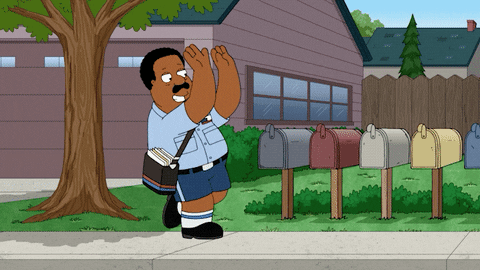Dear Jerxy: Cutting Them Off
/Dear Jerxy: What do you do if people are asking to see trick after trick? My instinct tells me not to do too many, in order to not overwhelm them and keep the tricks feeling special. On the other hand, if they’re asking to see something, and I have tricks I could be showing them, it feels dumb to not be showing them something. But I have so many in my repertoire I sometimes feel like I can’t stop. What do you think?
Signed,
Stopless in Seattle
Dear Stopless: The key factor in my decision making in this sort of situation is if I’m ever going to see this person again. For example, if I’m traveling and I strike up a mini-friendship with someone on a flight or at a hotel bar or something, I may end up showing them something. And if they’re super enthusiastic and asking for more, more, more, I may just go all night with them. I do this even though I think it’s a detriment to the magic, and even though I know the impact of any given effect will be lessened when performed in this way.
But I do this for two reasons:
It gives me the chance to try out a bunch of stuff I’m working on in an efficient way (as in not having to find a different person for each trick).
I try to think about what’s best from their perspective. If someone really loves seeing magic, is it better for them to focus that energy on one truly mind-blowing piece of magic? Or to see a whole bunch of stuff? I think an argument can be made for both. But if I’m only going to see them this one time, and they really love magic, and they’re asking for more, then I’m probably going to give them as much as they want. It’s likely going to blend into one generic memory in their mind, with very few specific details sticking out. But I’m fine with that if they look back and think what an enjoyable time they had in a general way.
The question is, how does me performing best serve this interaction and this relationship? With a single-serving friend, it can make sense to go ahead and overwhelm them with stimuli and perform a lot.
With someone you’re going to see at least semi-regularly, the relationship/interaction will be best be served by performing less, and keeping those performances feeling somewhat special.
I will give you a damn near perfect analogy for this...
Imagine you met a professional pastry chef somewhere randomly. You can imagine that an amazing memory would be the night you met that pastry chef and they shared with you a dozen different desserts. And you had bite after bite of cakes and cookies and doughnuts and croissants and cinnamon rolls and so on.
But if your friend was a pastry chef, and you saw her somewhat frequently, your enjoyment of those desserts would likely diminish if she brought you a bunch of stuff every time you saw her. At the very least, your appreciation for that lemon blueberry pie would be greater if she brought you one perfect slice to indulge in, rather than if it was one of eight desserts you tried. And the memory of that pie eaten on its own would almost certainly be much stronger and more long-lasting.
The impreciseness of this analogy is only in the fact that the average person has a much bigger appetite for pastries than magic. So the concept of getting “burned out” on something is only more true for magic than baked good.
But how do you gently turn someone down if they’re asking to see more and you’re trying not to wear them out?
Well, this is where it helps to frame yourself as someone with an interest in magic and not someone with any legitimate special powers. People outside of the magic world don’t have a clear understanding of how magic works in the broad sense. So if you perform a trick or two and they’re asking for more, you can just say that at this point in time you don’t have anything else to show them. You can say something like, “These aren’t like the tricks you would read in books in the public library, where you can just learn a whole bunch, and always be able to perform a couple dozen tricks at any time. With these types of tricks you sort of master one or two at a time. And if you don’t keep on top of them regularly, your ability to perform them falls away.”
If you say, “I don’t really know anything else I can show you at the moment,” that maintains the rarity of the magic performance without you having to say, “No! I’m done.”
At this point it’s a great idea to tell them about something you’re “working on” that you’ll try to have ready the next time you see them. Or teach them a trick that sets them up to be more fooled sometime down the road. This way you can capitalize on their interest in a way that boosts future performances.



